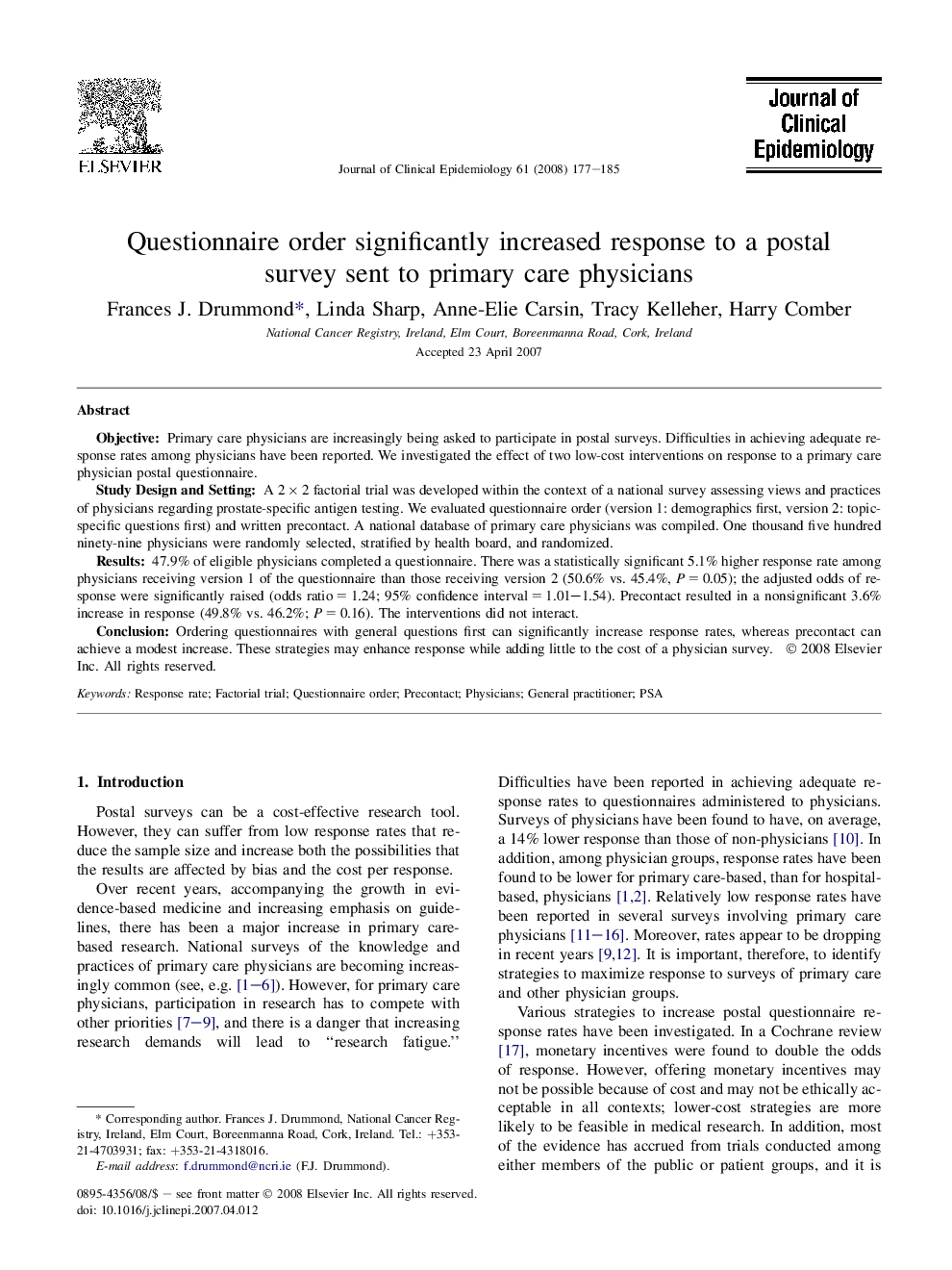| کد مقاله | کد نشریه | سال انتشار | مقاله انگلیسی | نسخه تمام متن |
|---|---|---|---|---|
| 1082740 | 950964 | 2008 | 9 صفحه PDF | دانلود رایگان |

ObjectivePrimary care physicians are increasingly being asked to participate in postal surveys. Difficulties in achieving adequate response rates among physicians have been reported. We investigated the effect of two low-cost interventions on response to a primary care physician postal questionnaire.Study Design and SettingA 2 × 2 factorial trial was developed within the context of a national survey assessing views and practices of physicians regarding prostate-specific antigen testing. We evaluated questionnaire order (version 1: demographics first, version 2: topic-specific questions first) and written precontact. A national database of primary care physicians was compiled. One thousand five hundred ninety-nine physicians were randomly selected, stratified by health board, and randomized.Results47.9% of eligible physicians completed a questionnaire. There was a statistically significant 5.1% higher response rate among physicians receiving version 1 of the questionnaire than those receiving version 2 (50.6% vs. 45.4%, P = 0.05); the adjusted odds of response were significantly raised (odds ratio = 1.24; 95% confidence interval = 1.01–1.54). Precontact resulted in a nonsignificant 3.6% increase in response (49.8% vs. 46.2%; P = 0.16). The interventions did not interact.ConclusionOrdering questionnaires with general questions first can significantly increase response rates, whereas precontact can achieve a modest increase. These strategies may enhance response while adding little to the cost of a physician survey.
Journal: Journal of Clinical Epidemiology - Volume 61, Issue 2, February 2008, Pages 177–185